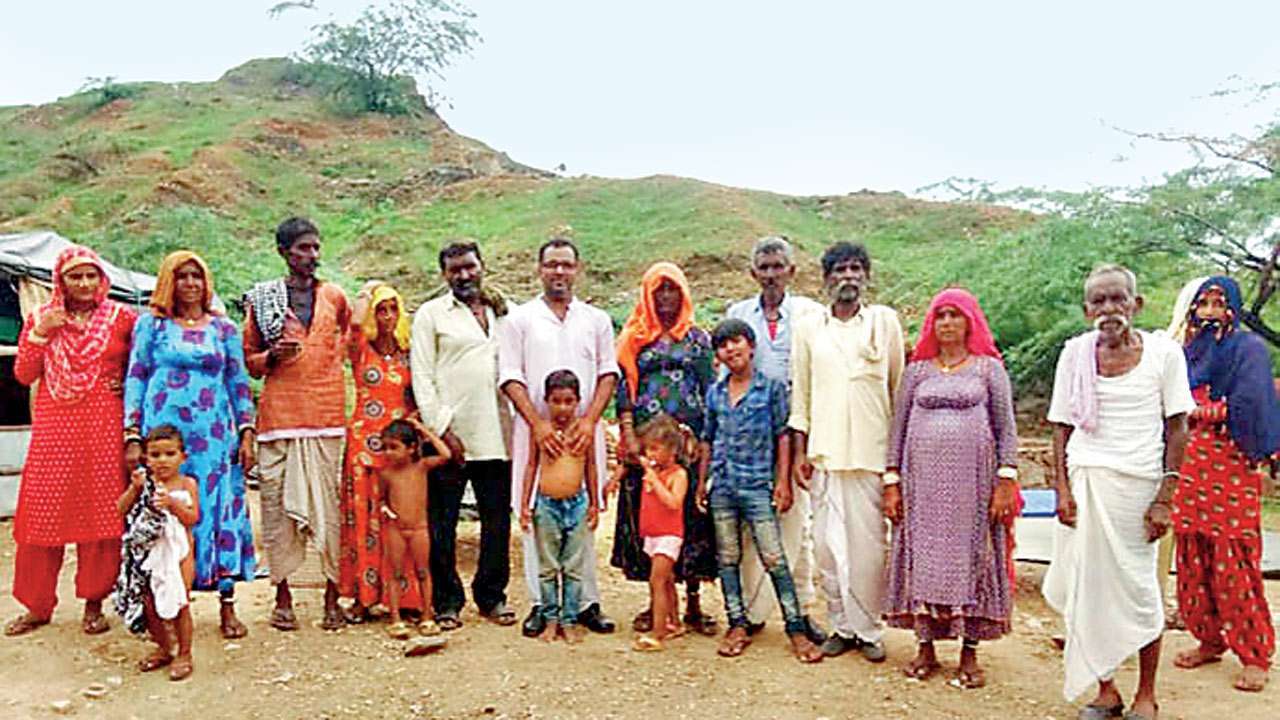India is home to a diverse spectrum of people, some of which are from nomadic tribes. It is a country of wonders nomadic tribes in india ,they are always moving. While some people desire to move about, others are forced to remain mobile and never settle down. Although they are traveling, some tribes prefer to remain in a single state, even if they live in many cities and towns. It can be challenging to distinguish them because they are so prevalent in Indian society. Yet, special characteristics, like those on clothing, can make it easier to tell which tribe a person belongs to.
These may not be practiced by average people, which is what sets them apart from other individuals. Customs vary across different tribes. It says volumes about each nomadic tribe, which is what makes them all distinct. To learn more about their intriguing history, we examine five nomadic tribes that are present in India.
1. Gandhila Tribe
The Gandhila tribe has long played a role in Punjab, Haryana, and Uttar Pradesh’s sociology. While they were born in Rajasthan, they fled during the Mughal invasion. Traditions within the community claim that they are derived from Sabal Singh, a Rajput. He was slain while serving in the Sultanate of Delhi’s military. His adversaries as a result drove his family away. After that, they were made to work menial labor like caring for donkeys, which is how the word “Gandhila” originated. As time went on, the Gandhila tribe’s primary source of income, which had previously been donkey breeding, eventually transitioned to the production of palm leaf brooms.
Nonetheless, many Gandhilas now work as day laborers, and many of them are employed in the construction sector. As a part of government initiatives to establish the community, a small number of persons received land grants. But, because the land was so tiny, the majority of people used labor in agriculture to supplement their income. The Gandhila tribe, like many others, emphasizes several cultural characteristics. One is that they like getting married to somebody from their own neighborhood. Even though the majority of them speak Punjabi, they also speak a language of their own called Pasto.
2. Changpa Tribe
A nomadic tribe from North India is known by the name Changpa. They originate from Jammu and Kashmir’s and Ladakh’s high-altitude Changtang. Prior to the Chinese conquest, certain groups used to travel to Tibet; however, the route was blocked. The Changpa tribe is dispersed in tiny numbers throughout the many Indian states, but they mostly reside in severely chilly climates. They are situated 4,500 meters above sea level on average. Snowstorms wreak havoc on the Changpa people’s country as a result during the winter.
While some are nomadic and are referred to as Phalpa, others are known as Fangpa and have made a permanent home somewhere. They can be identified by their yak-skin tents either way. The only source of income for the majority of the tribe is raising animals and then using and selling their products, such milk and meat. Their main food sources are barley and the flesh of yaks and wild horses. Moreover, chilli-seasoned dried cheese and meat cooked with barley flour are consumed. The Changra goats, recognized for having the finest and rarest of all goat hair, are raised by the Changpa tribe.
The Changpa tribe also resides in these areas, and although they were traditionally thought of as a sub-tribe, they were given official status as a Scheduled Tribe in 1989.The Changpa have different customs, a different language, and a different ethnicity even if they can understand Ladakhi. The Changpa are a distinctive nomadic tribe in India as a result.
3. Bharwad Tribe
Given that they think they are derived from a mythical lineage, the Bharwad tribe is one of India’s most distinctive. The Bharwads inhabited the area surrounding Mathura, Uttar Pradesh, based on their traditions. Afterwards, they relocated to Mewar in Rajasthan before dispersing in Gujarat, where the majority of them live now. Numerous people reside in and around the Gir Forest National Park, but due to the threat posed by Asiatic lions, they avoid grazing their cattle inside the forest itself.
Due to their little post-primary education and mostly herding goats and sheep, they are sometimes regarded as belonging to lower castes in society.
Nonetheless, because they are among the most urbanized in the area and have a specialized role in the delivery of milk, their social standing has improved. One of the most blatant signs of identification in the present day is the wearing of pink and red shawls by both men and women. Even those who favor wearing Western attire do so. The community’s traditional way of life as a nomadic tribe may be highlighted by the desire to identify through clothes and tattoos.
4. Kela Tribe
The hunting tribe known as the Kela can be found in the Indian state of West Bengal. They had traditionally engaged in the capture of toads, birds, and snakes, but the occupation was despised by the surrounding villages. As the word Kela is derived from the Bengali word Kala, which signifies unclean, the tribe prefers to be called Kharia. Despite their reputation for collecting a variety of animals, the tribe has completely abandoned their traditional trade.
Sharecroppers make up the bulk, but many also work repairing locks and bags. The Bengali-speaking Kela tribe has its own cultural customs, just like other tribes. One important one is that people must exclusively marry members of the same social group; in this example, local residents marry each other. They reside in mixed-caste villages but have their own special spaces, called paras. This nomadic community has had to modify its way of life throughout the years.
5. Narikurava Tribe
They received their name because of how adept they were at hunting and capturing jackals. Hunting was their primary occupation, but they were forced out of the forests. The Narikurava were forced to leave their homes because their hunting of endangered species led to hunting being outlawed. As a result, they were no longer able to support themselves. They had little choice except to pursue other avenues of support, including selling beaded decorations.
Because to the Narikuravas’ ingestion of animals shunned by settled societies, they have endured discrimination for a long time. They are not allowed in populated streets. As they can no longer hunt, younger members of the village have turned to criminality, which has sparked objections from the community. The origins and beliefs of these nomadic tribes are deeply rooted in history. Though most people are accepted in society, certain people still face prejudice because of their cultural customs. They will continue to reside in different places even if it could take some time for them to be accepted. They are unique from other tribes since they have a long history. These neighborhoods are but one example of India’s diverse cultural heritage.




